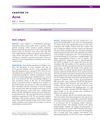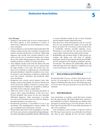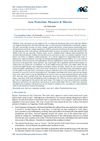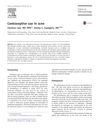Pubertal Acne
January 2016
in “
Springer eBooks
”
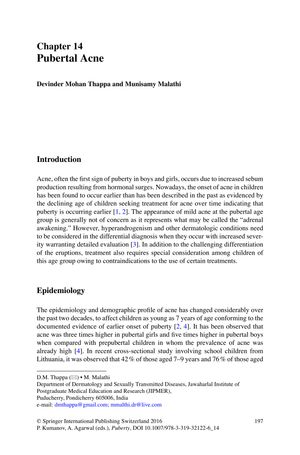
TLDR Pubertal acne is linked to hormonal changes, affects quality of life, and is treated similarly to adult acne.
The document from 2016 by Thappa and Malathi provided an overview of pubertal acne, highlighting its early onset in children as young as 7 and its association with hormonal changes during puberty. It is more prevalent in girls initially but increases in boys with age, with ethnic differences observed. Factors such as family history, diet, and body mass index influence the prevalence and severity of acne. The pathogenesis involves hormonal changes, excess sebum production, and inflammation. A study of 6,200 Caucasian boys showed a 7.74% prevalence of acne, with those affected being taller, heavier, and more advanced in pubertal development. Severe acne in prepubertal girls may indicate hormonal disorders. Treatment should be age-appropriate and target the underlying pathogenetic factors, with guidelines provided by the American Acne and Rosacea Society. Acne impacts quality of life and may predict more severe acne later in life, but typically decreases post-adolescence. Diagnosis is usually based on history and physical examination, with treatment for pubertal acne being similar to that for adults.
